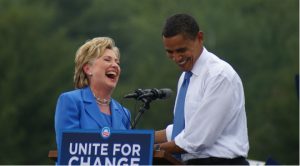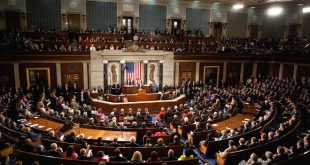 Success breeds failure. That’s one of the melancholy lessons you learn in life. The success of policymakers in stamping out inflation in the 1980s and minimizing recessions for two decades also produced policies that contributed to the collapse of the housing and financial markets in 2007-08
Success breeds failure. That’s one of the melancholy lessons you learn in life. The success of policymakers in stamping out inflation in the 1980s and minimizing recessions for two decades also produced policies that contributed to the collapse of the housing and financial markets in 2007-08
It’s the same in politics. Strategies and tactics that seem certain to produce victory can eventually produce defeat. Prognostications that one party or platform will prevail far into the future usually turn out to have a surprisingly early sell-by date.
That becomes apparent when you look at the shrinking margin for Hillary Clinton in the polls. As of Friday, the Real Clear Politics average of recent polls shows Clinton’s margin down to 1.5 percent in two-way pairings with Donald Trump and down to 1.1 percent in four-way pairings that include Gary Johnson and Jill Stein.
And it’s down to 0.7 percent in polls that included interviews conducted on or after Sept. 11, when Clinton collapsed while attending a 9/11 commemoration in Manhattan.
Note that Clinton is averaging only 42 percent in four-way polls, with 11 percent being cast for the minor-party candidates. That means Clinton is running far short of her goal of replicating the 51 percent majority Barack Obama won in 2012.
That majority depended on high turnout and high Democratic percentages from three groups: blacks, Hispanics and young people. The last two of these demographic groups will inevitably grow as percentages of the population, and many observers have speculated that this will result in an emerging and enduring Democratic Party majority.
But Hillary Clinton is having trouble assembling that majority this year. Blacks turned out at higher rates than whites in 2012, for the first time in history. That was driven by intensive turnout efforts, but also by spontaneous enthusiasm for the first black president, as shown by high black turnout in the non-target states of Louisiana and Mississippi. That’s not likely to be duplicated with the first black president no longer on the ballot.
As for Hispanics, there’s speculation they’ll turn out in vast numbers to oppose Donald Trump. But maybe not. Polling shows Trump faring no worse among Hispanics than Mitt Romney at this point four years ago. And in July the Pew Research Center reported that “Hispanic voters lag all registered voters on several measures of engagement,” including following the news and thinking about politics.
Clinton runs farthest behind the Obama 2012 numbers among young voters. Those under 30 voted 66 percent for Obama in 2008 and 60 percent in 2012. But the most recent Quinnipiac poll showed Clinton in a four-way pairing winning only 31 percent among voters under 35 — which might portend, as the Atlantic’s Russell Berman writes, “a big dip in turnout by young Americans.”
It’s not clear that standard campaign tactics will help. After Clinton’s collapse she canceled her schedule for the next two days — which consisted of fundraisers on the West Coast. This came after her “baskets of deplorables” characterization of half of Trump supporters — made at a Manhattan fundraiser.
But why keep raising money in mid-September? Has the money she’s raised so far been buying her votes? Her millions of dollars of ads in target states, run while the Trump campaign spent zero, didn’t build landslide-type leads, or prevent any leads she had from being whittled down in the weeks since Trump flew to Mexico Aug. 31.
The old rule is that putting up ads gets you votes. But maybe that rule doesn’t apply when you have two such widely known — and widely distrusted and disliked — candidates.
Money can also buy you lots of campaign headquarters and huge tranches of big data identifying individual voters’ preferences and concerns. The Obama 2012 campaign showed that organization and data-mongering are most useful when messages are conveyed not by TV spots or robocalls but by actual volunteers concerned about similar issues. How many of these can Hillary Clinton inspire?
When Clinton was leading in polls after the Democratic National Convention, she looked to have a chance in Georgia and Arizona, with 27 electoral votes, which Mitt Romney won by 8 and 9 percent. Now that polls have the race nationally about even, 10 states — with 125 electoral votes — that Obama carried by smaller percentages may be within range for Trump. Success, for either party, sooner or later breeds failure.
COPYRIGHT 2016 CREATORS.COM
Photo credit: Marc Nozell (Creative Commons) – Some rights reserved
 Michael Barone, senior political analyst at the Washington Examiner, (www.washingtonexaminer.com), where this article first appeared, is a resident fellow at the American Enterprise Institute, a Fox News Channel contributor and a co-author of “The Almanac of American Politics.”
Michael Barone, senior political analyst at the Washington Examiner, (www.washingtonexaminer.com), where this article first appeared, is a resident fellow at the American Enterprise Institute, a Fox News Channel contributor and a co-author of “The Almanac of American Politics.”
The views expressed in opinion articles are solely those of the author and are not necessarily either shared or endorsed by Black Community News.
 CURE News and Clergy Blog News and Commentary for Christians
CURE News and Clergy Blog News and Commentary for Christians



